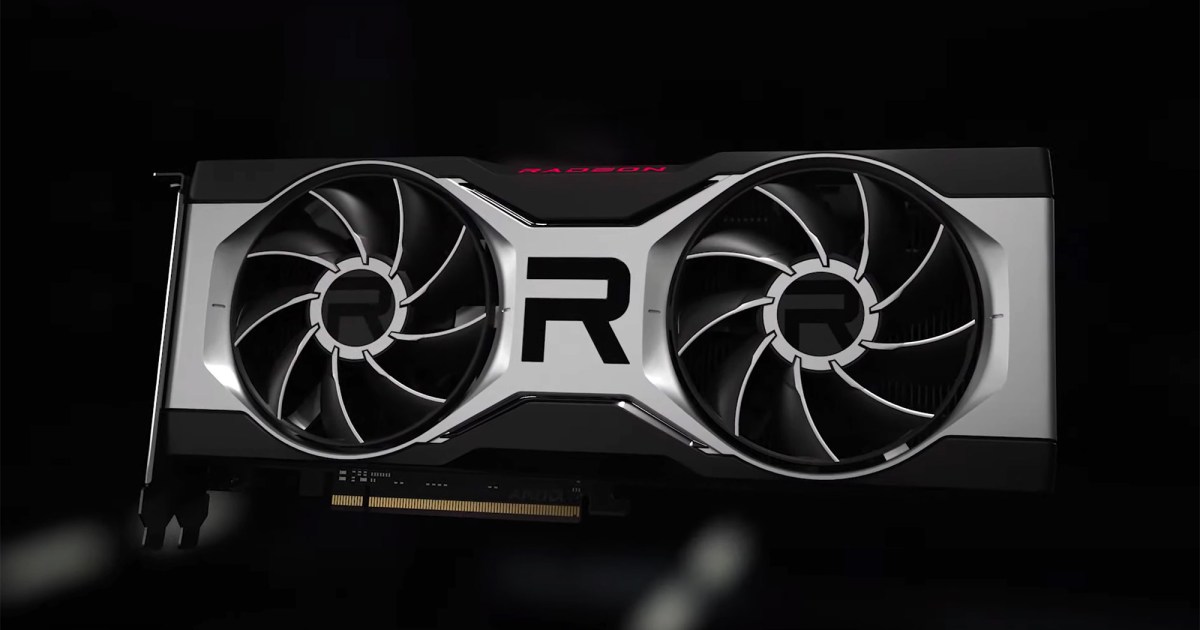
AMD FSR (FidelityFX Super Resolution): everything you need to know
AMD’s FidelityFX Super Resolution (FSR) is a supersampling feature available in a large swath of games. It has a simple goal: improving gaming performance on the best graphics cards. To help you understand how it works and why you should turn it on in your games, we rounded up everything you need to know about AMD FSR, including the newly announced FSR 3.
It works by rendering your game at a lower resolution, but the magic of FSR comes in the upscaling. It attempts to fill in missing details to make your game look like it’s running at native resolution, just with a massive boost in performance. Here’s all you need to know about it.
What is AMD FidelityFX Super Resolution?
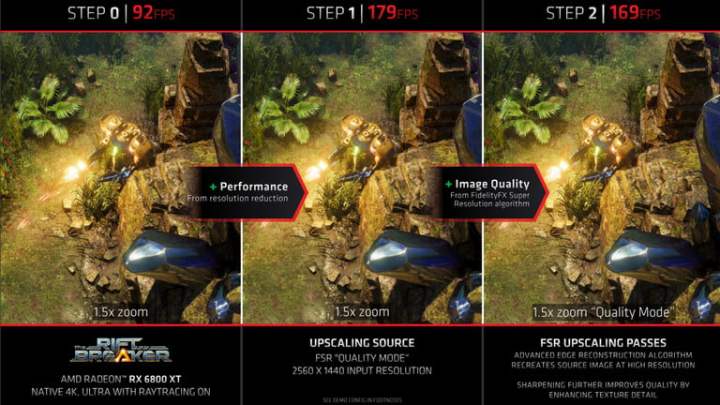 Image used with permission by copyright holder
Image used with permission by copyright holder
FSR is AMD’s answer to Nvidia’s Deep Learning Super Sampling (DLSS). Like DLSS, FSR is a supersampling feature that makes a game look like it’s rendering at a higher resolution than it really is. So, the engine may render the game at 1080p, and then FSR steps in to fill in the missing pixels to make it look like a 1440p output.

Get your weekly teardown of the tech behind PC gaming
There are now two versions of FSR, and FSR 2.0 is much better than the original. There are several differences between them, which we’ll dig into in the next section. Although there are still some games with the original FSR, more and more titles are shipping with FSR 2.
Compared to DLSS, there’s one major difference between both versions of FSR. DLSS requires an Nvidia RTX GPU, while FSR works with graphics cards from AMD, Nvidia, and even Intel. Official support goes back to GTX 10-series and Radeon RX 400 series, though FSR can still work on older hardware.
In addition, the source code is available for free to developers on AMD’s GPUOpen platform, and it’s available through the Unreal Engine 4 and Unity game engines. Basically, any developer, regardless of their budget or connections, can get FSR working in their games.
FSR is only available in games where the developers have chosen to include it, though. AMD offers its Radeon Super Resolution feature specifically for Radeon GPUs. This is basically FSR 1.0 available through your AMD driver, allowing you to apply upscaling to any game as long as you have a supported GPU.
FidelityFX Super Resolution quality modes
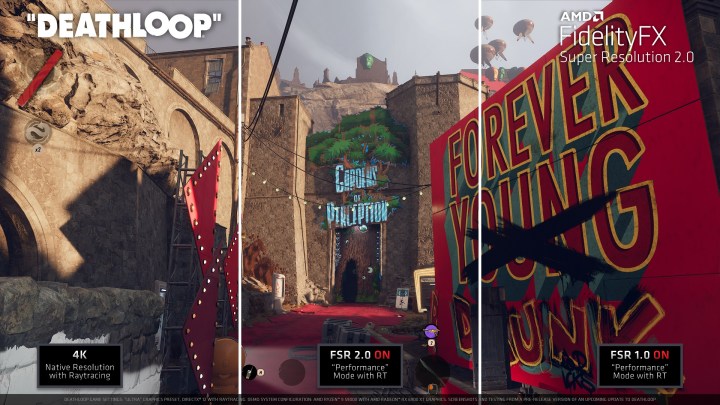 Image used with permission by copyright holder
Image used with permission by copyright holder
FSR comes with different quality modes to adjust how much performance you want versus how good you want your game to look. Each quality mode provides a scaling factor that will upscale the internal resolution to what’s outputted on your display. Here are the quality modes for FSR 1.0:
- Ultra Quality — 1.3x scaling
- Quality — 1.5x scaling
- Balanced — 1.7x scaling
- Performance — 2x scaling
The scaling goes in both dimensions, so you’d multiply the vertical and horizontal resolution to figure out the final output. For example, if you ran the Performance mode on a 4K monitor with a resolution of 3840 x 2160, it would render the game at 1920 x 1080.
FSR 2.0 has slightly different quality modes. Instead of an Ultra Quality mode, it starts with Quality and matches the same scaling factors as FSR 1.0. Game developers have access to an optional Ultra Performance mode with FSR 2.0, however. This mode provides 3x scaling, but AMD says it won’t be available in every FSR 2.0 game.
What GPUs support FidelityFX Super Resolution?
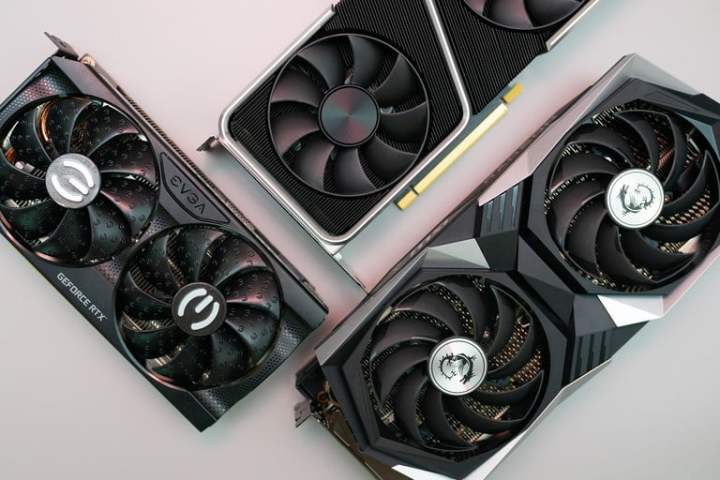 Jacob Roach / Digital Trends
Jacob Roach / Digital Trends
FSR stands out over DLSS due to its cross-vendor support. You can use an AMD or Nvidia graphics card, but only the last few generations are officially supported. FSR should still work on older GPUs, but you may encounter issues or decreased performance. Here are the graphics cards that support FSR 1.0:
- AMD Radeon 7000 series
- AMD Radeon 6000 series
- AMD Radeon 6000M series
- AMD Radeon 5000 series
- AMD Radeon 5000M series
- AMD Radeon VII graphics
- AMD Radeon RX Vega series
- AMD Radeon 600 series
- AMD Radeon RX 500 series
- AMD Radeon RX 480/470/460 graphics
- AMD Ryzen desktop processors with AMD Radeon graphics
- AMD Ryzen mobile processors with Radeon graphics
- Nvidia GeForce RTX 40-series
- Nvidia GeForce RTX 30-series
- Nvidia GeForce RTX 20-series
- Nvidia GeForce 16-series
- Nvidia GeForce 10-series
- Intel Arc A-series
FSR 2.0 supports the same graphics cards technically. AMD says the requirements for an optimal experience are a little more strict, though. You can still use it with an Nvidia or AMD GPU, but AMD recommends a slightly more powerful graphics cards for higher resolutions. You can see the recommended GPUs in the table below.
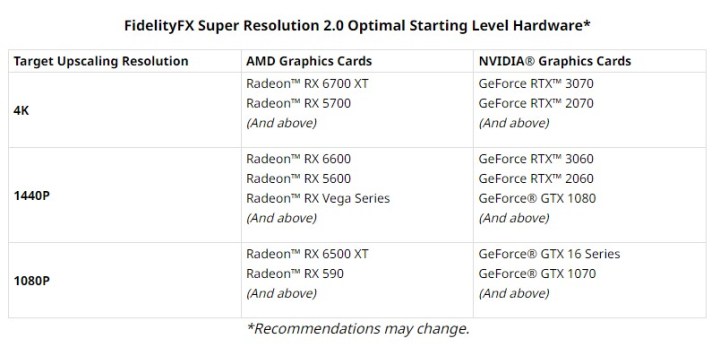 AMD
AMD
How does FidelityFX Super Resolution work?
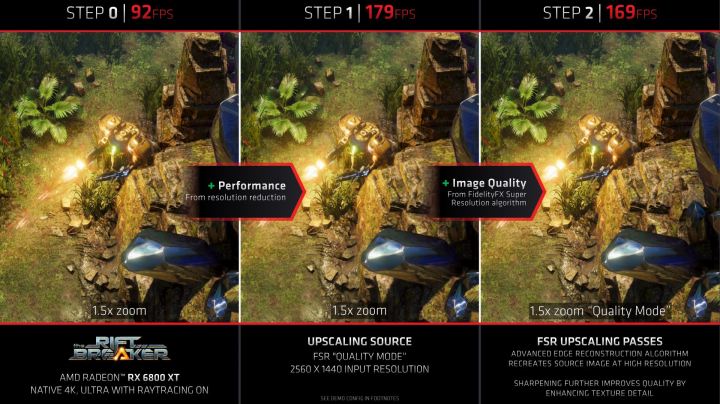 Image used with permission by copyright holder
Image used with permission by copyright holder
FSR 1.0 and 2.0 work much differently, but they’re built around the same core. Both supersampling features use the Lanczos algorithm for upscaling. It starts by feeding the upscaler a low-resolution image, which is then blown up with extra detail based on the algorithm. FSR performs a sharpening pass afterward to restore a little more detail.
That’s how it works at a high level, but the critical difference between FSR 1.0 and FSR 2.0 comes down to anti-aliasing. With FSR 1.0, the game would perform anti-aliasing before the upscaling was applied, which lead to much worse image quality when the game had a poor anti-aliasing implementation.
FSR 2.0 changes that. It doesn’t require anti-aliasing, instead performing Temporal Anti-Aliasing (TAA) after the upscaling is done. This is similar to how DLSS works, and it’s why the Temporal Super Resolution (TSR) feature in Ghostwire Tokyo looks as good as it does.
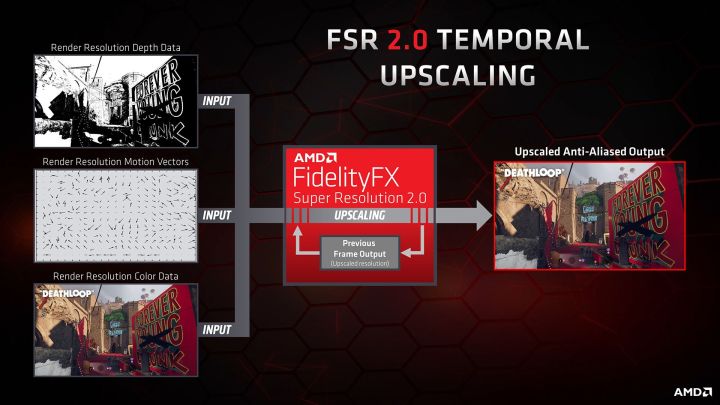 Image used with permission by copyright holder
Image used with permission by copyright holder
Compared to DLSS, the big change with FSR is that it’s not accelerated by AI. DLSS requires dedicated Tensor cores on RTX graphics cards to run an AI model that assists in upscaling. FSR is part of the game’s render pipeline, allowing it to work with graphics cards from different vendors.
What about FSR 3?
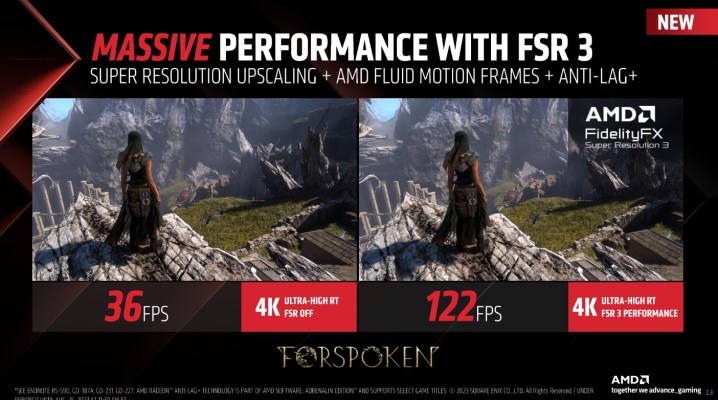 AMD
AMD
FSR 3 is a new addition to the suite that adds Fluid Motion Frames. It’s similar to Nvidia’s DLSS 3 in that it compares two sequential frames to generate a new one between them. Called frame interpolation, AMD says the feature can double and sometimes even triple your frame rate in supported games.
The first games sporting FSR 3 will be Immortals of Aveum and Forspoken, which will receive a post-launch update. AMD says it has several more games in the works, though, including Cyberpunk 2077, Crimson Desert, and Frostpunk 2.
FSR 3 works on any GPU, just like the base version of FSR. In addition, AMD is offering its Fluid Motion Frames tech though its AMD Software, allowing you to apply the feature to nearly any game with an AMD GPU.
What games support FidelityFX Super Resolution?
 Image used with permission by copyright holder
Image used with permission by copyright holder
AMD has vastly expanded support for FSR over the last several months. Here are all of the games that support FSR 2:
- Asterigos
- Deathloop
- God of War
- Saints Row
- The Callisto Protocol
- The Riftbreaker
- Uncharted: Legacy of Thieves Collection
- Red Dead Redemption 2
- Chernobylite
- Choo-Choo Charles
- Cyberpunk 2077
- Death Stranding
- Deep Rock Galactic
- Destroy All Humans! 2
- Dying Light 2
- Edge of the Abyss Awaken
- Everspace 2
- Evil Reap
- Farming Simulator 22
- Forza Horizon 5
- Ghostwire Tokyo
- Gotham Knights
- Gungrave GORE
- Highline Volleyball VR
- Hitman 3
- Hoiwa Hub
- Judgment
- Kingshunt
- Lost Judgment
- Martha is Dead
- Marvel’s Spider-Man and Miles Morales
- Microsoft Flight Simulator
- Need for Speed Unbound
- No Man’s Sky
- Paragon: The Overprime
- Remnants
- Scathe
- Scorn
- SCP Pandemic
- SCUM
- Shibainu – VR Katana Simulator
- Swordsman Remake
- The Bridge Curse Road to Salcation
- The Chant
- The Eternal Cylinder
- The Witcher 3
- There Won’t Be Light
- Thymedia
- Tiny Tina’s Wonderlands
- Vail VR
- Valhall: Karbinger
- Vampire: The Masquerade – Bloodhunt
- Warhammer 40,000 Darktide
- Will to Live Online
The library of FSR 1.0 is much larger, and AMD as well as modders are patching it into new titles constantly. Here’s the full list of games that support FSR 1.0:
- Assassin’s creed Valhalla
- Far Cry 6
- Godfall
- Horizon Zero Dawn
- Resident Evil Village
- Sniper Elite 5
- Terminator Resistance
- World War Z
- Amid Evil
- Anno 1800
- Arcadegeddon
- Assetto Corsa Competizione
- Back 4 Blood
- Baldur’s Gate 3
- Black Desert
- Call of Duty: Vanguard
- Century: Age of Ashes
- Dota 2
- Edge of Eternity
- Edge of the Abyss: Awaken
- Elite Dangerous: Odyssey
- Enlisted
- Evil Genius 2
- F1 2021
- Gamedec
- Ghostrunner
- Ghostwire: Tokyo
- Grounded
- Hellblade: Senua’s Sacrifice
- Hot Wheels Unleashed
- Icarus
- Keo
- Kingshunt
- Lego Builder’s Journey
- Marvel’s Avengers
- Marvel’s Guardians of the Galaxy
- Myst
- Myth of Empires
- Necromunda: Hired Gun
- No Man’s Sky
- Phantasy Star Online 2
- Quake 2 RTX
- Ready or Not
- Second Extinction
- Shadow Warrior 3
- The Medium
- Undying
- Warhammer Vermintide 2
- Workshop simulator
- World of Warcraft: Shadowlands
- World of Warships
If you want to see FSR in your favorite game, you can request it through the AMD FSR wishlist.


